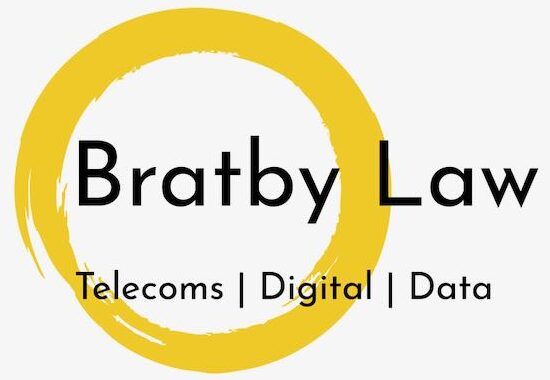I was intrigued to read today’s joint response (from Starhub, M1, MyRepublic, ViewQwest, SuperInternet, Nucleus Connect and the Asia Pacific Carriers’ Coalition) to the Singapore telecoms regulator’s (IDA) public consultation on whether to allow additional ownership consolidation in its national fibre-optic network market.
With the benefit of hindsight, I was pondering how an apparently elegant solution to a regulatory challenge has ended up being so complicated and arguably ineffective. The challenge that Singapore faced was how to regulate the build out of a subsidised national fibre-optic network. The solution they chose was structural separation of the various up-stream and down-stream activities of a national fibre-network.
However, with hindsight I would argue that the chosen solution was over-engineered and was unlikely to work in a market where some of the retail competitors ended up with economic interests in some of the theoretically separate upstream entities. In part, this was because an overly complex solution was imported from another market without sufficient regard to the local market conditions and the practical difficulties of achieving de facto ownership separation in a small and concentrated market such as Singapore. Whilst it is too late for Singapore to rethink its regulatory structure in this space, there are lessons for other jurisdictions considering appropriate regulation of subsidised fibre roll-out.
To explain further, a market failure may occur in situations where, without regulatory intervention, the market will not deliver an optimal outcome for consumers. Broadband networks relying on a common infrastructure but with retail competition (such as Singapore’s national fibre broadband network or NBN) are an example of a potential market failure if the same company both controls the common infrastructure and competes in the down-stream retail market. This failure manifests itself by the company controlling the network favouring its own retail business over its retail competitors (that do not have control of the network). Without equal treatment, competitive intensity decreases and customers get worse service, quality, choice and may pay more. In essence, any vertically integrated company which both controls a network and competes in a retail market which requires use of that network has both the incentive and the ability to discriminate in favour of itself.
Regulatory invention can take many forms. What was originally intended in Singapore was that the NBN network (OpenNet) would be owned separately from the NBN operating company (Nucleus Connect) and the operators (Singtel, Starhub, myRepublic, etc) would compete at the retail level. In addition, (this happened during the tender process) the passive assets of Singtel (ducts, etc) used by OpenNet would be operationally separated from Singtel and placed into a trust – the NetLink Trust, which would be managed separately from Singtel.
This would create a four layer structure:
- Passive asset owner (Netlink Trust)
- Network owner (OpenNet)
- Wholesale network operator (Nucleus Connect)
- Competitive retail service providers.
This structure theoretically fixes the market failure described above provided that the first three layers are regulated (as they are monopoly providers) and that no participant in the retail market has ownership or control of any of the first three layers.
However, this theoretical situation does not exist in Singapore today and the proposed consolidation proposals arguably exacerbates the existing problems by giving Singtel additional economic interest in the network owner layer as well as the passive assets.
If we come back to the issues I identified above, Singapore’s IDA has imposed various regulatory obligations that seek to constrain the ability of Singtel to effectively influence the conduct of Netlink Trust.
However, whilst Singtel retains economic ownership (even through a trust) it retains the incentive to discriminate. To be clear, this isn’t about companies or trustees seeking to do anything wrong – it is more that they have a duty to maximise shareholder value or act in the interest of relevant beneficiaries and as part of that duty any rationally managed company or trust will seek to maximise the value of its vertical integration or vertical relationship unless constrained otherwise. At the moment Singtel has a 100% ownership interest in the assets held by the Netlink Trust, and the trustees must act in the best interests of their beneficiary. Following the proposed consolidation, OpenNet’s assets will also be 100% owned by Singtel (through the trust). Although there are proposals for divestment of Singtel’s interest in the trust down to a minority interest, the timetable for the planned divestiture has been delayed.
The key question is whether the regulatory constraints on Singtel’s actions are sufficient to constrain its ability to discriminate in favour of its own downstream business. Whilst the IDA consultation sets out a list of current controls (including reference offers and non-discrimination requirements), market experience to date would suggest that there are still material deficiencies in the regulatory regime (evidenced in particular by roll-out problems) that need to be addressed, and the consortium response sets out a long list of proposed additional regulatory conditions.
An interesting contrast is the approach taken in the UK (albeit to address a somewhat different problem – bottleneck control over legacy last mile copper access) to require BT to functionally separate its copper access business into Openreach. Openreach was then made subject to a requirement of equivalence which in practice went much further than the existing Singapore requirement to provide reference offers and non-discrimination (and also goes further than the conditions proposed by the consortium).
In a small market like Singapore, it seems unlikely that ownership will ever be really disentangled, so regardless of whether consolidation is approved or not it will be interesting to see what additional regulatory requirements the IDA will consider imposing on the NetLink Trust.
